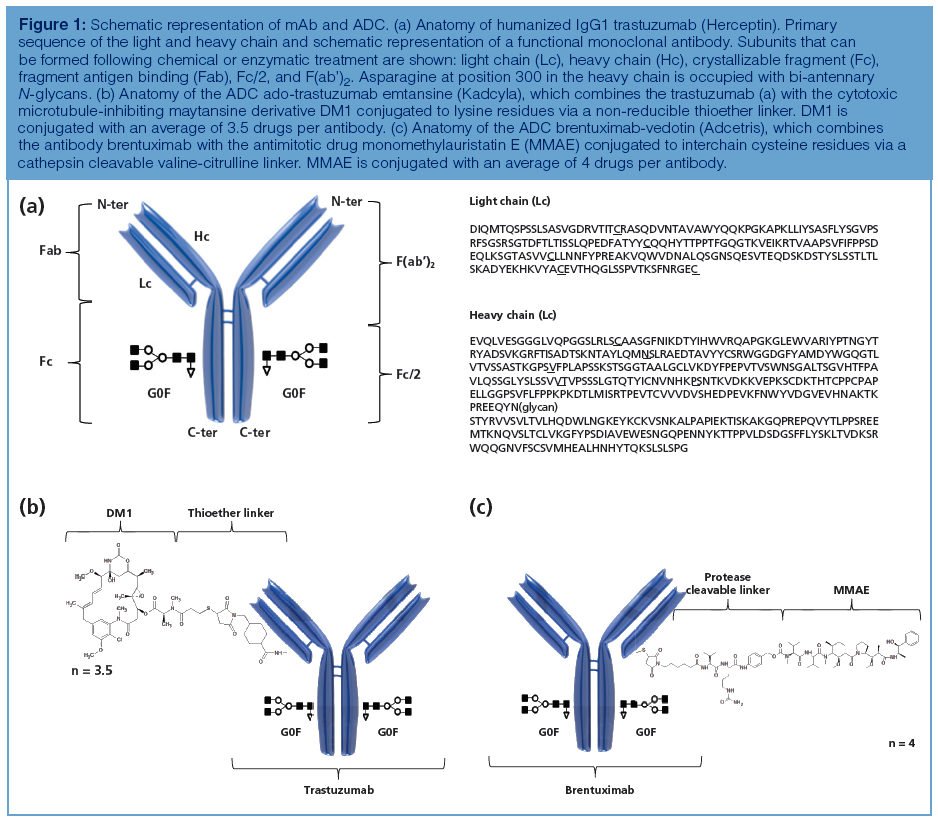The 2017 LCGC Awards
LCGC Europe
A decade of LCGC awards has seen some of chromatography’s modern icons and rising stars honoured. In this 10th year of the award, we are pleased to honour two superb separation scientists: Pat Sandra, the winner of the 2017 Lifetime Achievement in Chromatography Award, and Deirdre Cabooter, the 2017 Emerging Leader in Chromatography. For the third consecutive year, the LCGC awards will be presented at an oral symposium held at Pittcon 2017. This year’s session, which were held on Monday 6 March, featured talks by both award winners and Milos Novotny of Indiana University, Jim Jorgenson of the University of North Carolina at Chapel Hill, and Gert Desmet of the Free University of Brussels (Vrije Universiteit Brussel).
A decade of LCGC awards has seen some of chromatography’s modern icons and rising stars honoured. In this 10th year of the award, we are pleased to honour two superb separation scientists: Pat Sandra, the winner of the 2017 Lifetime Achievement in Chromatography Award, and Deirdre Cabooter, the 2017 Emerging Leader in Chromatography. For the third consecutive year, the LCGC awards will be presented at an oral symposium held at Pittcon 2017. This year’s session, which were held on Monday 6 March, featured talks by both award winners and Milos Novotny of Indiana University, Jim Jorgenson of the University of North Carolina at Chapel Hill, and Gert Desmet of the Free University of Brussels (Vrije Universiteit Brussel).- Lewis Botcherby

Pat Sandra, 2017 Lifetime Achievement in Chromatography

Pat Sandra
Pat Sandra’s career has encompassed a wide spectrum of analytical techniques, blending the world of academia and private enterprise, and brought separation science into the mainstream consciousness. But more than anything, it has been dominated by analytical excellence, innovation, and a unique gift for problem solving.
Pat Sandra graduated from Ghent University, Belgium, in 1967 with a B.Sc. in chemistry and in 1969 with a master’s degree in organic chemistry, and was immediately invited to join Professor Maurice Verzele’s laboratory to begin a Ph.D. thesis on the contribution of hops to the flavour of beer, a topic that had become controversial at the time in Belgium, where beer is an integral part of the culture. Unravelling the complexity of a beer extract required high-resolution techniques and this research led directly to Sandra’s early career focus in capillary gas chromatography (GC). Six years later, Sandra successfully defended his Ph.D. at Ghent University and just one year later he joined the Faculty of Sciences at Ghent University as an Assistant Professor.
By 1985, however, Sandra was growing frustrated with the department’s reluctance to back him in broadening Ghent’s research field in separation sciences and to start investigations in supercritical fluid chromatography (SFC) and capillary electrophoresis (CE). By 1st February 1986, Sandra quit the university. Inspired by entrepreneurs such as Rudolf Kaiser, Sandra started the Research Institute for Chromatography (RIC), surviving through teaching courses on GC and GC coupled to mass spectrometry (MS), as well as sponsorships from Carlo Erba and later from Hewlett-Packard. Two years after quitting the university, however, Sandra accepted an offer by the head of the department to return and become the new head of the separation science group. A fruitful collaboration on capillary GC then began between Sandra’s own RIC and Ghent’s separation science group. Splitting his time between the institute and his new responsibilities at the university, Sandra decided to focus the university department’s research on high performance liquid chromatography (HPLC), CE, SFC, and hyphenated systems, and that work led to a number of advances.
In 1991, Sandra accepted an invitation to be a visiting professor at Eindhoven University of Technology in The Netherlands, teaching a course in environmental analysis. A further opportunity arrived in January 1998, when Sandra was appointed Professor in Analytical Chemistry at the University of Stellenbosch, South Africa. There, he established a centre of excellence in separation sciences and received the A1 status. For seven years he shuttled between Belgium and South Africa to fulfill his duties at the different universities and at
the RIC.
Sandra continued to make waves. He co-founded the Pfizer Analytical Research Centre at Ghent University in 2003, and became its director. He continued his links with South Africa where he became Extraordinary Professor at the University of Stellenbosch from 2006 to 2013. In 2013 he was invited by President Barroso of the European Community to become member of the Research Councel of the EU.
Meanwhile, he continued to develop and expand his business. Following the success of the RIC in Belgium, Sandra founded a second facility in Lille, France, in 2001 to focus on method development, act as the exclusive distributor of Gerstel GmbH, as well as a value-added reseller (VAR) of Agilent Technologies. In 2016, he cofounded with his sons Tom and Koen anaRIC biologics, a centre combining R&D and GMP for biopharmaceuticals
We interviewed several of Pat’s colleagues, friends, and former students about his career, achievements, impact, and relationships.
Expansive and Groundbreaking
Sandra is well known for his expansive knowledge in all aspects of modern separation techniques and this wide range of knowledge has led to an impressive list of publications and patents. He is the author or coauthor of more than 550 scientific papers and has contributed to books covering many different areas of separation science. He is admired not just for the breadth of his work, but for his innovation.
“Pat Sandra is rightly considered a ‘guru’ of chromatography. This is clear from a brief glance at his published outputs, where by any metric-number of papers, citations, h-index, and so forth-he is clearly a world leader in the field,” said André de Villiers, who is an associate professor at Stellenbosch University in South Africa.
“Pat is unique in his breadth of understanding and experience in analytical separation science,” said Milton L. Lee, Emeritus Professor of Chemistry at Brigham Young University and last year’s winner of the LCGC Lifetime Achievement Award. “He has been an innovator in every form of analytical separations, including all the chromatographic and electrically driven techniques, coupled systems, detection, and sample preparation. Few, if any, have such an allâencompassing perspective of the field.”
Milos V. Novotny, Distinguished Professor Emeritus of Chemistry at Indiana University, agrees.
“He has had an enormous impact in the field of separation science, from his seminal contributions to column technology during the early important period in capillary GC to unique sampling techniques and GC instrumentation, supercritical fluid chromatography, and more recently, to biomolecular separations,” Novotny said. “He is clearly one of the most influential scientists in our field.”
“Pat always had an excellent feeling for the critical ‘pain-points’ in separation science,” added Frank David, the R&D Director of Chemical Analysis at the RIC.
In particular, Sandra’s ability to take on new technologies has truly impressed other scientists in the field. “He has always been one of the first to embrace new technological evolutions and very often he is lying at the origin of them,” said Gert Desmet, Professor at the Vrije Universiteit Brussel. “He was doing separations no one else could do.”
“Pat’s career can be defined by the almost intuitive selection of successful research topics before they even exist or become mainstream,” added Frederic Lynen, his successor at Ghent University. “He was for example performing GC–MS based ‘metabolomics’ long before the terminology was coined. That is also true for his lipodomics, chiral, capillary electrochromatography (CEC), and LC×LC work.”
Early Research
Sandra’s early research focus on capillary gas chromatography stemmed from the work he did during his doctoral work under Maurice Verzele, who laid down the gauntlet for Sandra to continue the technique’s development. Sandra obliged. In the next 10 years, he pioneered numerous developments that contributed to state-of-theâart GC column technology. Those contributions included surface treatment by leaching, dendrite and whisker formation, deactivation by persilylation and with aminoâalcohols, immobilization of the stationary phases, introduction of new stationary phases (such as superoxes, crosslinkable biscyanosilicone phases, and silanol-terminated silicone phases), and more (1).
Frank David remembers those days when he worked under Sandra as a master’s student in 1982 at Ghent. “The themes we were working on at the university in the 1980s included capillary GC column technology, injection, miniaturized sample preparation, and multidimensional GC,” David said. “The results of that research have undoubtedly contributed to the ‘mature’ state of GC today.”
A story from that time illustrates a common theme mentioned throughout our interviews: Sandra’s flexibility and creativity as well as his determination to succeed.
Carlo Bicchi spent some time working in Verzele’s laboratory in 1984, while visiting from Turin University. During that time, he collaborated with Sandra’s group, working with the young Frank David on direct capture of volatiles emitted from living plants. Because of an unusual story related to academic jealousies, Bicchi said, Sandra was suddenly left without instruments, so he and David had to move their work to Sandra’s own Siemens heartcut GC–GC instrument. In their work up to that point, the volatiles were being captured on thick film polydimethylsiloxane (PDMS) column traps by sorption, and the recovery of the volatiles was planned to be carried out by a completely different system based on conventional GC. But suddenly, that conventional GC instrument was no longer available to the team. So Bicchi and David had a long, twoâday discussion with Pat, and then designed a new system. “After a lot of experiments, myself and Frank under Pat’s supervision successfully assembled a primitive but effective direct resistively heated system to desorb the trapped analytes,” Bicchi relates. “To the best of my knowledge, it was one of the first times where sorption was applied to headspace sampling, after Kurt Grob’s introduction, and a chromatographic column was directly heated.”
As referenced earlier, Sandra always had a unique intuition for chromatography, right from the beginning. That intuition extended to recognizing the crucial innovations of others, and led, for example, to his early recognition of the importance of flexible fused-silica GC columns introduced by Dandeneau and Zerenner (2). This view contributed heavily to the early direction of Sandra’s research and was a view he maintained, despite some vocal opposition from proponents of alternatives. History has since vindicated his conclusion.
But for Sandra’s keen chromatographic intuition and creativity to flourish, he needed to step outside the relative safety of academia.
A young Pat Sandra relaxes with his wife Martina.
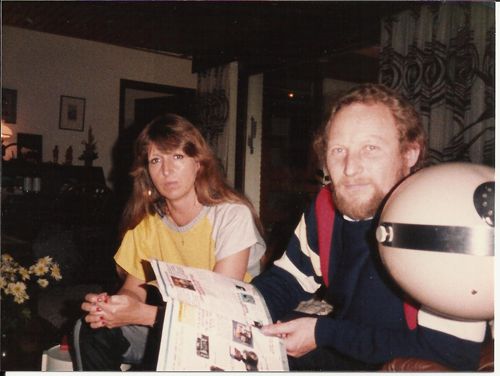
Separation Entrepreneur
Since its foundation in 1986, Sandra’s company, the Research Institute for Chromatography (RIC), has gone from strength to strength. Frank David has been there to witness its growth from the beginning. “It was of course a challenge for him, and partly for me, to start a private company independent from the safe haven of the university,” David said. “However, I believe it was a very exciting experience for the both of us, and we could enjoy a unique position as a research institute in between the academic world, industry, and instrument manufacturers.”
But the challenges of setting up a new company can be daunting and none more so than the financial element. Surviving from grants in the early days came at a cost of missed opportunities, as Sandra referenced in the book Chromatography-A Century of Discovery 1900–2000: The Bridge to the Sciences/Technology (1). An example was the work Sandra undertook in 1986 with resistant heated capillaries. “Fused silica tubing was enveloped in a stainlessâsteel jacket, insulated like an electrical wire, and the metal column ends were connected to a power supply,” he recounted. “Retention time reproducibility was not excellent, but nevertheless the principle was patent pending for one year.” Because of a lack of funds, however, Sandra could not continue the patent application. “A missed opportunity-resistively heated column GC, what we called at that time flash GC,” said Sandra.
Setbacks weren’t going to stop Sandra, however. “Pat’s work ethic has always been impeccable,” notes Lynen. “He is the kind of character who is always polite and friendly to everybody while never compromising on his scientific no-nonsense attitude.” That work ethic would imbue Sandra’s achievements in the late 1980s and 1990s as he split his time between his recently formed company, newly acquired academic responsibilities in his role as director of the separation science group of the organic chemistry department at Ghent University, symposium organizing, and editorial roles.
Patently Innovative
In addition to his stellar work in capillary GC, Sandra has also contributed to a remarkably broad span of research areas. “He has a prominent spot in the history books as one of the great experimentalists in chromatography,” said Desmet. Sandra’s work includes both fundamental and applied highâlevel research in all forms of chromatography, including HPLC, SFC, electrophoresis, and micellar electrokinetic chromatography (MEKC). Hyphenating these with on-line sample preparation and mass spectrometric detection, he has applied these techniques across multiple application fields, including the chemical and petrochemical industries, food science, environmental analysis, forensic analysis, pharmaceuticals, and the life sciences. His publiactions in all these different fields and techniques are witnessing this.
“Certainly, Pat is always attacking the cutting edges of the research in the field of separation science,” said Andrei Medvedovici, Professor and Dean of the Faculty of Chemistry at the University of Bucharest in Romania. “He is always first or among the first to develop new frontiers.” Milton Lee echoed that sentiment. “Few, if any, have such an allâencompassing perspective of the field,” he said.
As a result, detailing all the contributions in Sandra’s later career is a mammoth task. Certainly, a well referenced development was his work in sample preparation and more specifically the development of stirâbar sorptive extraction (SBSE), which went on to be commercialized with Gerstel as the “Twister” technology. His early work with SFC resulted in the development of multicolumn chiral analysis and improved lipid analysis by applying silver ion chromatography and coordination ion-spray mass spectrometry. Furthermore, Sandra introduced chiral CEC and various novel approaches for chiral CE and MEKC, as well as inventing “per aqueous” liquid chromatography (PALC). The 2000s saw Sandra’s attention shift towards HPLC with notable work in ultrahigh-pressure LC (UHPLC), high temperature LC, and multidimensional LC. In more recent years, together with his son Koen Sandra, his attention has shifted towards the application of chromatographic and mass spectrometric techniques in life sciences with a particularly emphasis in biopharmaceuticals and omics. He is an innovator, and the span of his innovation has been enormous. This work also led to many patents-despite missed opportunities like that for flash GC.
The Problem Solver
One of the most famous and well referenced stories relating to Sandra stems from his work to solve the Belgian dioxin crisis in 1999, which some consider his greatest accomplishment. “By properly managing expectations and quickly developing and implementing rapid analysis methods, Pat managed to help defuse a crisis of truly great proportions,” said Tadeusz Górecki, a professor at the University of Waterloo, Canada. “In the process, he put separation science front and centre for the general public to see and became a face for chromatography, at least in Belgium.”
The crisis originated from chicken farmers’ observations of premature death and nervous disorders among chicks, combined with a high ratio of eggs failing to hatch. While various theories were postulated, dioxin contamination was the lead theory, championed by a laboratory specialized in the analysis of such compounds. But with a four-week response time for dioxin analysis, the crisis was spiralling. Four months after the initial problems were reported, strong measures were taken to protect the public from food contamination, including the destruction of eggs, chickens, and all related products. Yet the source of the contamination was still unknown.
“At the same time, the Belgian government released some confusing information, including the statement that these analyses were extremely complex and could take several weeks,” said Frank David, who was working at the RIC with Sandra when the crisis was unfolding. Sandra and others at the RIC remained unconvinced that dioxins only could contaminate food products at ppb levels without the presence of other chlorine-containing contaminants in much higher levels. They instead believed the high dioxin (PCDF and PCDD) ratios seen in poultry samples suggested polychlorinated biphenyl (PCB) contamination, a conclusion stemming from astute observations made during animal feed analyses carried out over many years at the RIC. The contamination was caused by uncontrolled disposal of transformer (PCBs) oil mixed with edible oils. The link between dioxins, PCBs, contaminated oils, fat, animal feed, and chickens seemed only logical to Sandra and his team. “We got our hands on an animal feed sample and were able to confirm within 24 hours this hypothesis by demonstrating the presence of high levels of PCBs using state-of-the-art GC–MS technology,” said David. The link between PCBs and dioxins was later confirmed by other laboratories and accepted by the European Commission. Tens of thousands of food samples had to be analyzed before Belgian food could be released and the analysis of PCBs compared to dioxins was much faster and above all much cheaper. “This also led to a national and European initiative of PCB monitoring that is still performed today, and also contributes to the European food safety programme,” added David.
The ability to think critically and logically brought Sandra fame in the dioxin crisis, but he used those skills to solve many other real-world problems, including a few others that captured public attention. An example was his work to defend two world champions in the motor world during the mid-1990s.
The first involved Michael Schumacher. In 1995, Schumacher won the Brazilian Grand Prix, but was disqualified following a claim that his gasoline deviated from the approved formulation. The RIC then performed a detailed analysis on fuel samples taken from Schumacher’s car. “Based on the analysis results and Pat’s expertise and presentation at the French FIA court, Schumacher’s disqualification was lifted and he became World Champion,” explained Frank David. The following year Sandra repeated the feat for Belgian motocross rider Eric Geboers, who thanks to Sandra’s analysis was crowned world champion based on the points he recovered after being cleared of wrongdoing.
Tadeusz Górecki cites another example of Sandra’s ability to solve real-world problems. While Górecki was visiting the RIC in the early 1990s, Sandra invited Górecki to join him on an appointment at a nearby brewery that had run into a problem. A recent batch of beer had a distinct and quite unpleasant chemical flavour to it, and no one could identify the cause. “We got to taste the beer and it was truly awful!” Górecki recalls. Sandra collected a number of samples and got to work. He managed to identify a bromochlorophenol as the chemical responsible for the bad taste and smell. “This proved to be more difficult than one would think, as the mass spectrum was not included in the NIST MS library back then,” said Górecki. “So Pat had to use the ‘classical’ approach to MS data interpretation based on fragmentation rules.” It turned out that the brewery had decided to save some money in their water treatment system by replacing high purity hydrochloric acid (HCl) suitable for contact with food with technical HCl, which turned out to be contaminated. Finding this solution was “classical Pat in action”, said Górecki. “What drives him most is the sheer curiosity and the challenge of solving a problem that others cannot,” he said. “To me, this was the prelude to the Belgian dioxin crisis. A different problem on a different scale, but the same motivation and approach.”
Awards
Given Sandra’s accomplishments, it is not surprising that Sandra has had numerous accolades bestowed upon him from across the world. Highlights include the 1989 Tswett Award; the 1994 Dal Nogare Award; the 1994 Martin Gold Medal; the 1995 Golay Award; the 1996 Colacro Medal; the 2004 ISEO Award; the American Chemical Society Chromatography Award 2005; the 2008 EAS Chomatography Award; the 2008 CASSS Award; the 2009 John Knox Award; the 2013 Csaba Horvath Award; and the Fritz Pregl Medal in 2014. He also received a doctor honoris causa title in pharmacy from the University of Turin, Italy, in 2004, in food chemistry and safety from the University of Messina, Italy, in 2007, and in chemistry from the University of Bucharest, Romania, in 2012. He was appointed honorary professor at the Dalian Institute for Chemical Physics, Chinese Academy of Sciences, in June 2007.
Pat Sandra and Jean-Marie Dimandja prepare to present the John B. Phillips Award for Outstanding GCxGC publication at the 1st Dalian International Symposia and Exhibition on Chromatography held in Dalian, China, June 2007.

Collaborations, Journals, and Symposia
All along, Sandra has shared his knowledge and expertise with a wide array of institutes, programmes, governments, companies, and people. His will to collaborate and work with others is a consistent motif throughout his life and career. And in every instance, Sandra leaves an indelible impact upon people, forming lifelong collaborations and quite often lifelong friendships, some of which can start in unusual places.
“I first met Pat in a McDonald’s restaurant on the Boardwalk in Atlantic City, I believe in 1980, during a Pittcon meeting,” explained Milton L. Lee. Recognizing Sandra from attending his presentation earlier, Lee approached him and introduced himself. “An enjoyable discussion then led to a lifetime association and friendship,” said Lee. Sandra and Lee went on to start the Journal of Microcolumn Separations together in 1989, serving as coeditors together for 12 years until it was purchased by Wiley and combined with the Journal of High Resolution Chromatography and Chromatography Communication to form a new journal, Separation Science. Interestingly, Sandra had been the editor-in-chief for the Journal of High Resolution Chromatography and Chromatography Communication until 1990, just one of many publications to which Sandra contributed in an editorial role, including but not limited to LCGC, the Journal of Separation Sciences, Chromatographia, and the Journal of Chromatography A.
Sandra and Lee also collaborated on and alternated as the chair of the hugely popular International Symposium on Capillary Chromatography. Sandra originally took over the series from Rudolf Kaiser in 1981 and together with Jacques Rijks and Sorin Trestianu, started the “Riva Meetings”, which some consider his most important contribution to capillary chromatography. “These meetings were really something very special,” enthused Ana Maria Costa Freitas of the University of Évora, Portugal. “The scientific merit of most of the talks or even the posters were enormous. They made the breakthrough of capillary chromatography.” Sandra was the chairman of the biannually organized Riva meeting from 1983 to 2012. In 2012 he invited Prof. Luigi Mondello from the University of Messina, to take over the chairmanship. “That is one thing I would have never imagined to happen, when I gave my first contribution at this symposium,” said Mondello. “I have always looked up to Pat, and watched very closely his stellar achievements in the field of separation science. The groundâbreaking contributions he made to the field of separation science have always been inspiring to me, and I especially appreciated his talent and willingness to face new analytical challenges.”
Sandra also spent six years as chair of the Symposium of Hyphenated Techniques in Chromatography (HTC), and those meetings were also the pivot points for fruitful collaborations. Gert Desmet recalls how he felt when Sandra called him on stage to present him with the HTC award in 2004. “At the time he was an unreachable hero for me, but this rapidly changed when we started working together and I was able to send some of my students to his famous Pfizer Analytical Research Centre in Ghent-first Deirdre Cabooter and later Ken Broeckhoven,” said Desmet. This was a very prolific cooperation, leading to a long string of co-publications and requiring little consultation. “One brief meeting every 4 or 5 months, typically ending with Pat wrapping up the meeting by defining in a stroke of genius the experimental details, and we were ready for another paper,” Desmet recalls, adding that theory and experiment came together seamlessly in the work. “Being novices in the field, we learned the art of chromatography through this collaboration,” said Desmet.
Sandra has also served as the chair of the International Organization for the Promotion of Microcolumn Separations; been the chair of the Cercle de Sciences Analytiques: Méthodes Séparatives; organized the highly successful HPLC 2007 in Ghent; been a member of the committee for Promotion of Chromatography in LatinâAmerica (COLACRO); and coordinated the Tempus programme, which aimed to modernize the higher education sector in Central and Eastern European Countries following the fall of the Berlin Wall-the programme through which he met Tadeusz Górecki as well as Andrei Medvedovici.
Through collaboration, symposium organization, and his contributions to journals, Sandra has influenced the direction of modern separation science. But perhaps his true legacy can only be fully understood through the words of those he has influenced.
Pat Sandra and Frederic Lynen at Pat's retirement party in 2012.

Mentor, Friend, Colleague
Through his career-teaching at multiple institutions, supporting conferences, and working in direct scientific collaborations-Sandra has created a vast legacy, inspiring and nurturing others.
Indeed, his penchant for making himself approachable and sharing his knowledge unselfishly is an undeniably admirable trait and one which has seen him leave an indefinite impression in fellow scientists.
“Pat and I have enjoyed a strong mutual trust for each other over the years. I cannot recall even one incident when he did not quickly and wholeheartedly respond to even the simplest request I made of him,” said Lee.
“I know we can always count on him. We can talk whenever we need and he is always available,” echoed Ana Maria Costa Freitas, who met Sandra at her first “Riva Meeting” in 1985.
“It is a privilege to be considered a friend and it is always a privilege to know him and to chat with him about science or in fact anything.”
“Let’s be honest. I was formed as a researcher of Separation Sciences by Prof. Pat Sandra. Certainly, we became friends, but he always remains my teacher, in the largest sense of the word,” said Andrei Medvedovici. He recalls how he felt when leaving Belgium after his first stay there, when Sandra gave him a copy of his book on micellar electrokinetic chromatography. Sandra signed it for him, saying, “To my excellent coworker and friend, always welcome in my group.” “I kept this book, and sincerely speaking, I consider these few words as my true graduation diploma in chemical research,” said Medvedovici.
“Whereas many people that do not know Pat see him as the accomplished scientist and successful entrepreneur, those that have the fortune to get personally in touch with him also know he is a very kind friend and a real family man,” added Desmet. “One of my dearest memories is a trip back from Germany in his stylish Mercedes, where in the evening hours he was called, one after the other, by his two sons and wife, and where I was privileged to witness how caring and loving they are with each other,” he recalled.
Throughout Sandra’s long and distinguished career he has inspired and innovated, challenged and advised, and done so with rare sincerity and scientific honesty. His willingness to help those who needed it and his passion for his work culminated in a lifetime of friends, colleagues, associates, and admirers.
“No assessment of Pat Sandra’s contribution would be complete without mentioning the large number of students and collaborators who have, under his tutelage, in their own right become important contributors to the field,” said de Villiers. “These are too many to list here, but each of them I am sure will be as delighted as I was to hear of the awarding of the LCGC Lifetime Achievement Award to Pat”
His surprise party in January 2012, when he retired from the university, provides evidence of the affection he engendered. “The party attracted more than a hundred scientists from all over the world, despite the impossible snow that day blocking all traffic in Belgium and the Netherlands,” remembers Frederic Lynen. “From the many tributes from many colleagues during that evening, it was clear that Pat was and is an extremely appreciated scientist worldwide.”
That appreciation of Sandra has been incredibly evident from the testimony of those who have engaged with him professionally and socially across many decades. To weave his lifetime of accomplishments into one final paragraph would not do justice to Sandra’s achievements. So instead, we leave you with a final quote from Ana Maria Costa Freitas: “Chromatography owes a lot to Pat Sandra.”
Pat Sandra, Deirdre Cabooter, and Gert Desmet.

Deirdre Cabooter, 2017 Emerging Leader in Chromatography
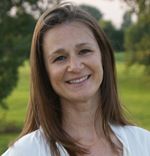
Deirdre Cabooter
LCGC’s 2017 Emerging Leader in Chromatography, Deirdre Cabooter, obtained her undergraduate degree in bioengineering in 2002 from the University of Antwerp, Belgium.
She then moved to the Free University of Brussels, in Belgium. There, she received a master’s degree in bioengineering, cell, and gene biotechnology in 2005 and a Ph.D. in chemical engineering in 2009, both under the supervision of Gert Desmet. During this time Cabooter would explore the possibilities and limitations of the kinetic plot method for comparing the kinetic performance of chromatographic separation methods and columns.
Desmet clearly remembers when Cabooter shifted from her master’s studies to her Ph.D. “From that moment on, Deirdre went like a whirlwind through her career, relentless in the lab, producing and analyzing data at every moment of the day and the week,” said Desmet. “She always had one aim: trying to understand the deep fundamentals of chromatography.”
After completing her Ph.D., Cabooter took up a postdoctoral position in Desmet’s lab for a year and a half before working for a year in the Department of Chemistry and Polymer Science at Stellenbosch University in South Africa under the supervision of André de Villiers. She has also spent a considerable amount of time working at the Pfizer Analytical Research Centre in Ghent. In October 2011, Cabooter took an assistant professor role in the Department of Pharmaceutical and Pharmacological Sciences at the University of Leuven, Belgium. In October 2016, she was appointed associate professor in the same department.
Since she started working at the University of Leuven, Cabooter has taken on several Ph.D. students and continues to collaborate regularly with her previous laboratory and specifically with Gert Desmet. “Deirdre has become a close friend with whom it is a privilege to collaborate and discuss new ideas, and dig deeper into the secrets of chromatographic theory,” said Desmet. “The sparkle in her eyes when she shows me another pile of unique data collected by one of her students is maybe one of the most invaluable souvenirs I will retain from my career.”
Gert Desmet, Deirdre Cabooter, and Frederic Lynen at HPLC 2014 in Amsterdam, The Netherlands.
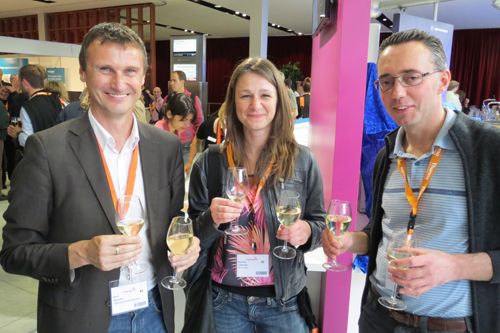
Kinetic Study
Cabooter’s research has encompassed a wide range of studies, but her work in the kinetic aspects of chromatographic performance is particularly noteworthy. “One of Deirdre’s greatest contributions in our field is related to the understanding of band broadening in chromatography, and the characterization of column band spreading using the kinetic plot methodology,” said Davy Guillarme, a senior lecturer at the University of Geneva, Switzerland. “She was part of Gert’s (Desmet) group when there was a significant amount of interest in kinetic plots for comparing the kinetic performance of core–shell technology, columns packed with sub-2-µm particles, and highâtemperature liquid chromatography. She has done a lot of work in this field and she is still involved in this field now.” The work Cabooter contributed to kinetic plot theory, the primary focus of Desmet’s group at that time, was significant. “Deirdre helped me put the kinetic plot theory on the map,” Desmet enthused.
An important aspect of Cabooter’s research stems from her approach that adopts elements of engineering. “Contrary to the bulk of chromatographic method development, which has been, for most of its history, a trialâandâerror process based on the chromatographer’s experience and background, Deirdre and her mentor Gert Desmet have put a lot of effort, and had many successes, in the further rationalization of chromatography and in the true merging of engineering with chromatography,” said Frederic Lynen. “Deirdre has been particularly instrumental in the development of predictive tools allowing improved UHPLC and HPLC data to be obtained in less analysis time and enabling higher separations efficiencies to be reached.” Cabooter’s research not only calculates the potential of kinetic plots, but also makes their practical implementation for genuine analyses much more accessible to the user. “A particularly interesting publication of Deirdre’s is her demonstration of the use of the kinetic plot method to reach 100,000 plates in HPLC in an easily reachable way by, for example, working at higher temperatures compared to conventional HPLC,” added Lynen.
As Cabooter has started up her research group at the University of Leuven, she has broadened her research focus to include studies related to pharmaceutical analysis, environmental analysis, bioanalysis, hydrophilic interaction liquid chromatography (HILIC), and reversed-phase LC. In her work, she has made major breakthroughs by developing the total pore blocking method, a technique that allows the decoupling of extra-particle from intra-particle contributions. The technique went on to be strongly embraced by Fabrice Gritti and Georges Guiochon. Furthermore, Cabooter has done a substantial amount of research into the automatic coupling of columns. “This offers many new possibilities in terms of analysis time gain and method development,” said Desmet.
Deirdre Cabooter working in her laboratory at the University of Leuven.
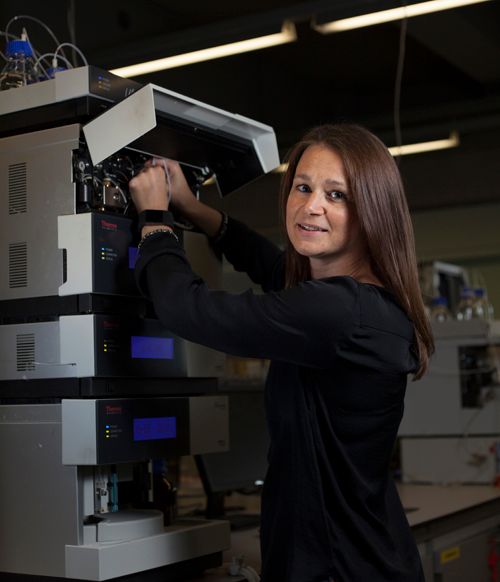
“Her current work on selectivity, where she merges HILIC and reversed-phase LC into one conventional HPLC system, with one pump, is also very interesting” added Lynen. “It has a lot of potential.”
Underlying her achievements is Cabooter’s focus and drive to satisfy her intellectual curiosity. Her character is best illustrated, Desmet says, by her three-week stay in the laboratories of Dionex Amsterdam, in 2009. “She slept in the guest apartment situated on the same floor as the lab, allowing her to work from 6 am to 11 pm,” he said. “And obviously, it would not have been Deirdre if she had not returned from her mission with a radiant smile and enough data for yet another paper.”
That drive has also resulted in a remarkable publication record. To date, she has 61 peer-reviewed publications in major scientific journals and her h-index stands at
an impressive 19. “In terms of citations, considerable interest has been shown in her publications,” said David McCalley, a professor in bioanalytical science at the University of the West of England. Cabooter also became a member of the editorial board of the Journal of Chromatography A in 2015.
McCalley also noted her many talks and excellent presentation skills. “Professor Cabooter is also increasingly popular as an invited speaker at major international conferences,” he added. “I have recently heard her presentations at the HPLC conference in San Francisco and at the Nordic Separation Science Society in Helsinki. Both were presented in a clear and concise fashion, which is vital when speaking to diverse international audiences.”
In addition to her research credentials, Cabooter has also taken on responsibilities as an organizer for the International Symposium on Hyphenated Techniques in Chromatography and Separation Technology (HTC). Her fellow organizers know her as highly energetic and an incredibly meticulous person. But to Frederic Lynen, she is a true problem solver. He cites one particular evening at the HTC-13 conference as an example, when the symposium dinner lasted much longer than anticipated, leading to significant problems with the drivers of the hired bus company. “Deirdre, being the type of person that she is, then personally made sure that the buses remained available to bring all the delegates home safely,” recounts Lynen. “What makes it even more impressive is that this took place in the middle of the dark forests surrounding Bruges at 2 am on a January morning,” said Lynen. “She has since been solving many many issues regarding the organization of these conferences,” he added.
The intensity that Cabooter applies to her work also shows up in her free time, such as when she makes the most of her opportunities to travel. David McCalley recalls how she took advantage of her trip to the HPLC conference in San Francisco last year. “In little over a week’s stay, she managed to cycle over the Golden Gate bridge the morning after her arrival, and then completed a whirlwind tour of Yosemite National Park, driving for half the night to reach the park after the last lectures on the final day.”
The future is very bright for Cabooter, and all our interviewees believe that her influence within chromatography will continue to increase. “Deirdre has been recognized as one of the most influential people in analytical sciences in both 2014 and 2016, and she now has obtained this Emerging Leader in Chromatography Award,” said Guillarme. “These recognitions are very well deserved and I’m sure they will help to boost her career even further.”
“I believe Deirdre’s research will contribute a lot to the development of in silico controlled chromatographic methods in the future,” added Lynen.
“Deirdre’s work is going to be a very important contribution to resolving the increasingly complex separation problems of the future,” commented Monika Dittmann, Principal Scientist Research and Development, Agilent Technologies.
As for her mentor, Gert Desmet predicts a similarly bright future for Cabooter. “Combining her great scientific skills with an enormous range of social skills, there is no doubt Deirdre will become one of the leading figures in the field of chromatography,” he concluded.
Sebastiaan Eeltink, Deirdre Cabooter, Ken Broeckhoven, Frederic Lynen, and Rudy Senten at HTC 2014 in Ghent, Belgium.

References
- C. Gehrke, R. Wixom, and E. Bayer, in Chromatography-A Century of Discovery 1900–2000: The Bridge to the Sciences/Technology, vol. 64 - Prominent Chromatographers and Their Research (Elsevier, 2001), pp. 477–495.
- R. Dandeneau and E. Zerenner, HRC&CC2, 351 (1979).

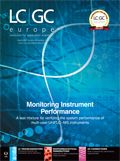
A Matrix-Matched Semiquantification Method for PFAS in AFFF-Contaminated Soil
Published: April 14th 2025 | Updated: April 14th 2025Catharina Capitain and Melanie Schüßler from the Faculty of Geosciences at the University of Tübingen, Tübingen, Germany describe a novel approach using matrix-matched semiquantification to investigate per- and polyfluoroalkyl substances (PFAS) in contaminated soil.
Silvia Radenkovic on Building Connections in the Scientific Community
April 11th 2025In the second part of our conversation with Silvia Radenkovic, she shares insights into her involvement in scientific organizations and offers advice for young scientists looking to engage more in scientific organizations.






